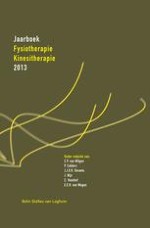Samenvatting
Schouderklachten komen vaak voor in de algemene eerstelijns fysiotherapiepraktijk. Circa 40 tot 80 procent van deze schouderklachten zijn schoudersyndromen: afwijkingen van structuren in de subacromiale ruimte en capsulitis. Hoewel er momenteel veel onderzoek wordt gedaan naar schouderklachten, is er maar weinig bekend over het huidige zorggebruik, over welke patiënten welke zorg zoeken en over het behandelproces van deze patiënten. Dit hoofdstuk laat zien dat patiënten in de huisartspraktijk wat betreft geslacht en leeftijd niet verschillen van patiënten in de fysiotherapiepraktijk. Patiënten die door de huisarts worden verwezen naar de fysiotherapeut hebben meer huisartsconsulten en aan hen worden minder medicijnen voorgeschreven. Een verwijzing naar de fysiotherapeut wordt vaak al in het eerste huisartsconsult gegeven. In de fysiotherapiepraktijk zijn patiënten die via directe toegang (DTF) komen jonger en vaker man dan de verwezen patiënten. Verder gaat het bij hen vaker om recidiverende klachten en zijn deze vaker gerelateerd aan sport en hobby en minder vaak aan werk. De behandeldoelen van de fysiotherapeut zijn frequenter gericht op spierfuncties en minder op mobiliteit. Bij 64 procent van de patiënten worden de behandeldoelen ook bereikt. Bij de huisarts komt 38 procent van de patiënten terug nadat zij zijn verwezen voor fysiotherapie. Deze relatief grote groep patiënten bij wie de klachten niet overgaan, wordt ook genoemd in de literatuur. Meer onderzoek, bijvoorbeeld naar het effect van een vroege(re) en gerichte(re) verwijzing en behandeling is daarom gewenst.
